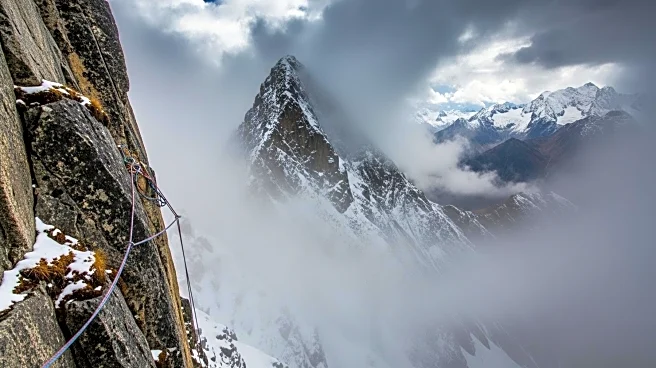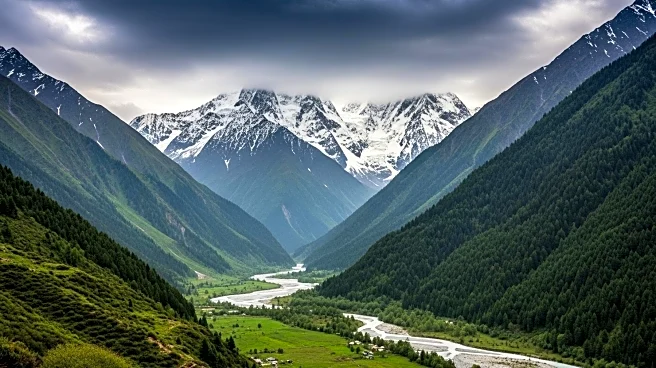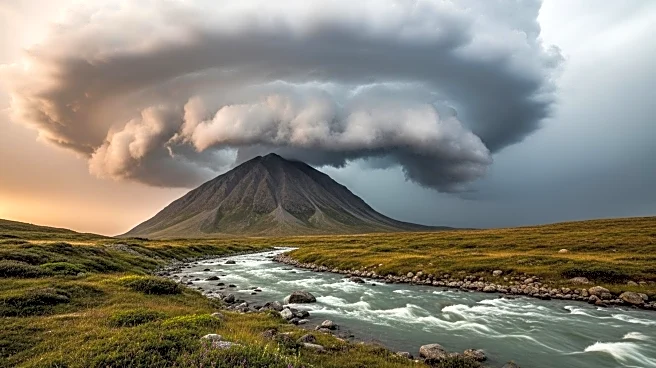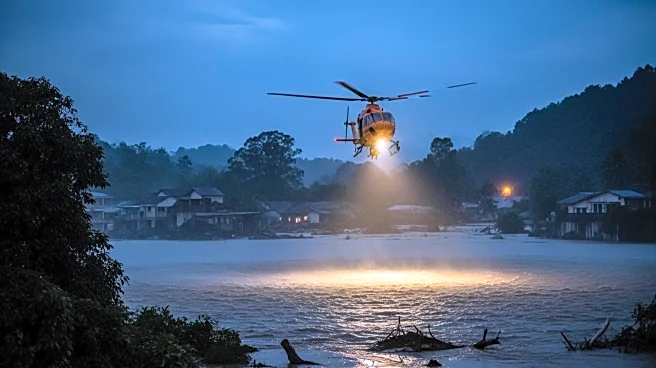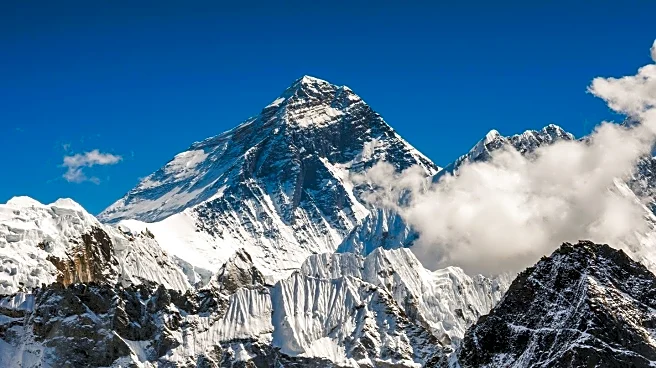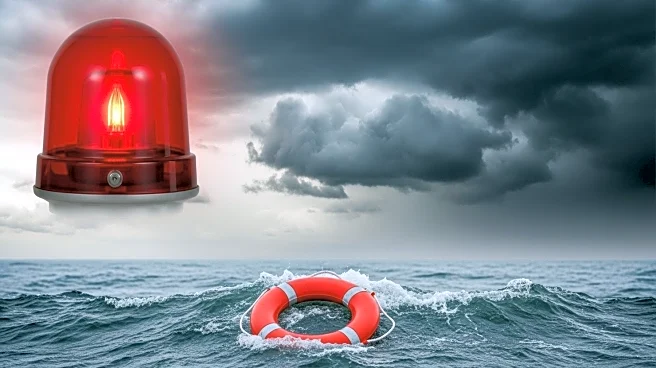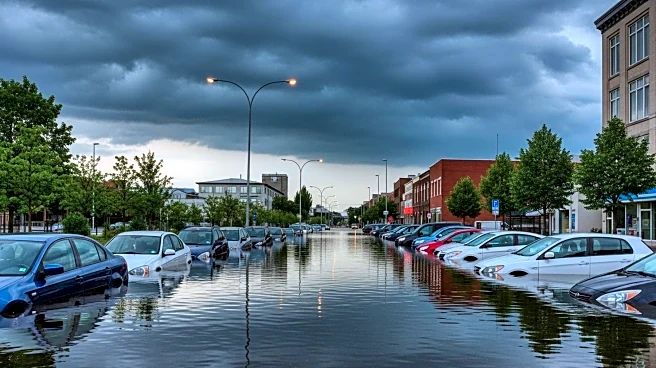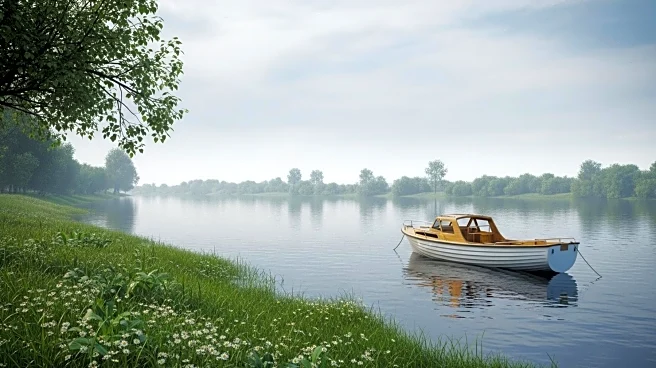What's Happening?
The autumn climbing season in the Himalayas has been disrupted by extreme weather conditions, including heavy snowfall and blizzards. Hundreds of tourists were stranded near the eastern face of Mount Everest due to sudden weather changes, resulting in one death from hypothermia and altitude sickness. The prolonged monsoon season, extending into autumn, has led to unpredictable weather patterns, with increased moisture in the air contributing to torrential rains and snowstorms. Rescue operations were conducted to guide stranded trekkers to safety, highlighting the challenges faced by climbers and local communities.
Why It's Important?
The extreme weather conditions in the Himalayas pose significant risks to the safety of climbers and tourists, impacting the region's tourism industry. The unpredictability of weather patterns due to climate change is affecting traditional climbing seasons, leading to economic losses for local businesses reliant on tourism. The situation emphasizes the need for improved weather forecasting and emergency preparedness to ensure the safety of visitors and residents.
What's Next?
Meteorologists and local authorities are monitoring weather patterns closely to provide timely warnings and updates. The tourism industry may need to adapt to changing conditions by adjusting climbing schedules and enhancing safety measures. Long-term strategies to address climate change impacts on mountain regions are essential to protect both the environment and the livelihoods of local communities.
Beyond the Headlines
The disruption of the climbing season in the Himalayas highlights broader environmental challenges posed by climate change. The increased frequency of extreme weather events calls for global cooperation in climate mitigation and adaptation efforts. The situation also raises ethical considerations regarding the safety and sustainability of tourism in vulnerable regions.
